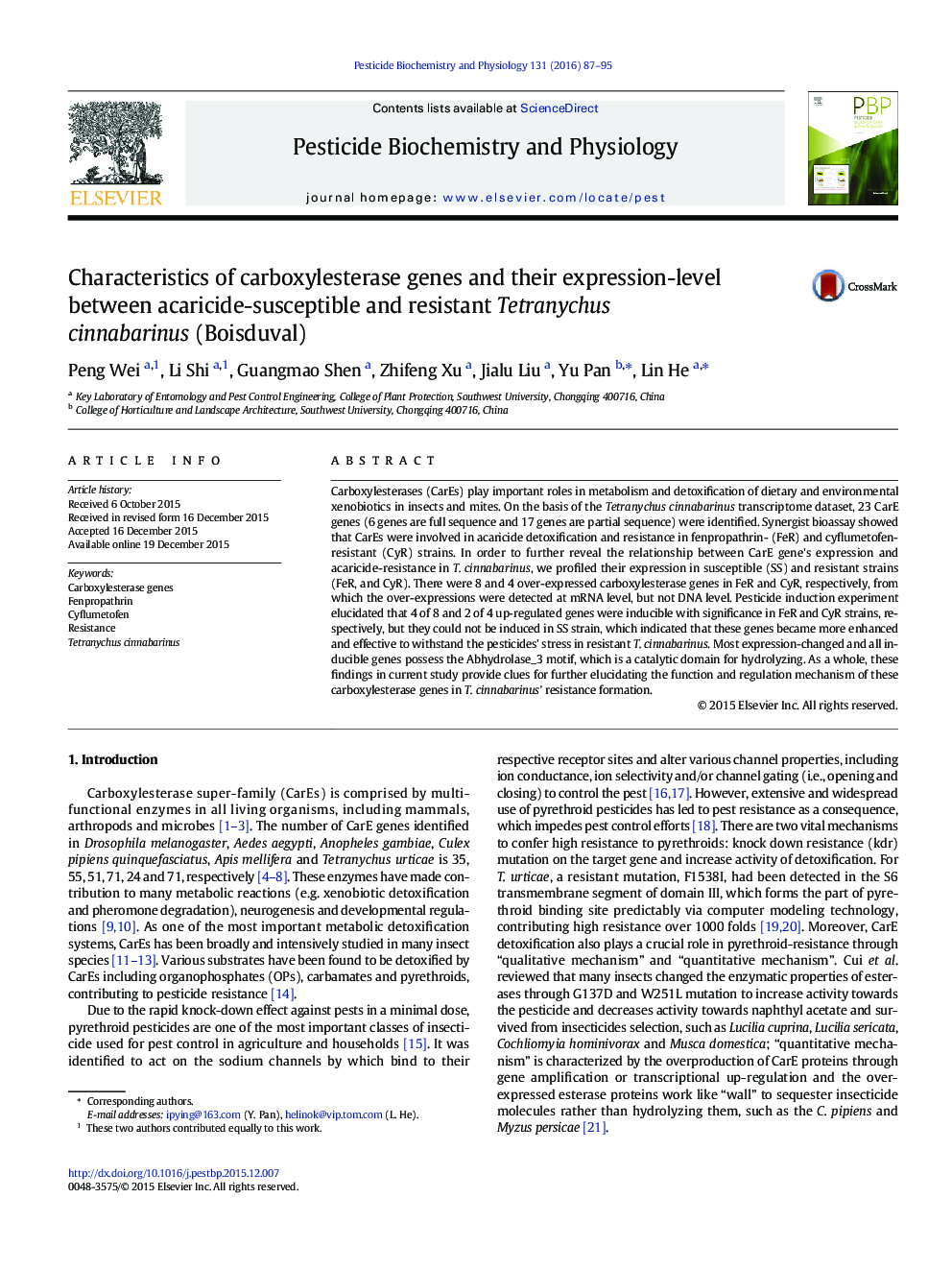| کد مقاله | کد نشریه | سال انتشار | مقاله انگلیسی | نسخه تمام متن |
|---|---|---|---|---|
| 2008960 | 1541768 | 2016 | 9 صفحه PDF | دانلود رایگان |

• Synergist test validated carboxylesterases (CarE) involved in acaricide resistance in T. cinnabarinus.
• Eight and four CarE genes were over-expressed in fenpropathrin- and cyflumetofen-resistant strains, respectively.
• Four and two over-expressed CarE genes were inducible in fenpropathrin- and cyflumetofen-resistant strains, respectively.
• All the over-expressed and inducible CarE genes owned the same hydrolyzing motif, Abhydrolase_3.
Carboxylesterases (CarEs) play important roles in metabolism and detoxification of dietary and environmental xenobiotics in insects and mites. On the basis of the Tetranychuscinnabarinus transcriptome dataset, 23 CarE genes (6 genes are full sequence and 17 genes are partial sequence) were identified. Synergist bioassay showed that CarEs were involved in acaricide detoxification and resistance in fenpropathrin- (FeR) and cyflumetofen-resistant (CyR) strains. In order to further reveal the relationship between CarE gene's expression and acaricide-resistance in T. cinnabarinus, we profiled their expression in susceptible (SS) and resistant strains (FeR, and CyR). There were 8 and 4 over-expressed carboxylesterase genes in FeR and CyR, respectively, from which the over-expressions were detected at mRNA level, but not DNA level. Pesticide induction experiment elucidated that 4 of 8 and 2 of 4 up-regulated genes were inducible with significance in FeR and CyR strains, respectively, but they could not be induced in SS strain, which indicated that these genes became more enhanced and effective to withstand the pesticides' stress in resistant T. cinnabarinus. Most expression-changed and all inducible genes possess the Abhydrolase_3 motif, which is a catalytic domain for hydrolyzing. As a whole, these findings in current study provide clues for further elucidating the function and regulation mechanism of these carboxylesterase genes in T. cinnabarinus' resistance formation.
Note: The column with “red” color represented FeR strain (upper) or fenpropathrin-induction (lower), “green” represented CyR strain (upper) or cyflumetofen-induction (lower), and “white” represented susceptible strain (upper) or without induction (lower).Figure optionsDownload as PowerPoint slide
Journal: Pesticide Biochemistry and Physiology - Volume 131, July 2016, Pages 87–95